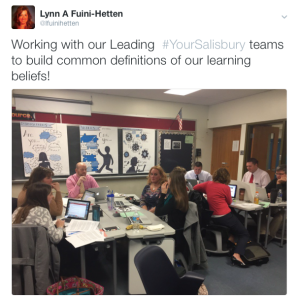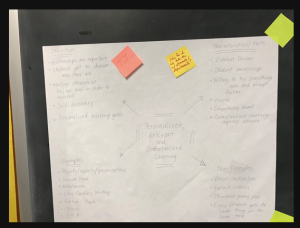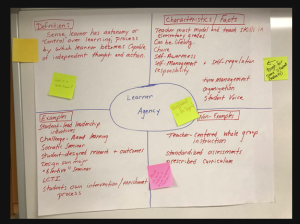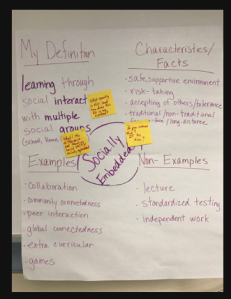 This week, teachers and leaders from Salisbury Township School District attended PETE&C, Pennsylvania’s Education and Technology Conference, in Hershey, PA. Professional conferences can be valuable learning experiences, and they often require a significant investment of human and/or financial resources? How can you make this human and financial investment meaningful for your district?
This week, teachers and leaders from Salisbury Township School District attended PETE&C, Pennsylvania’s Education and Technology Conference, in Hershey, PA. Professional conferences can be valuable learning experiences, and they often require a significant investment of human and/or financial resources? How can you make this human and financial investment meaningful for your district?
- Before the conference – Prepare!
- Build the team who will attend. Hopefully, your team will include some veteran attendees as well as first-timers. Additionally, if possible bring a team which is comprised of teachers, building and district leaders, and even relevant support staff. In the past, we have brought members of our tech support staff to this conference. Conferences can be a great venue for learning together!
- Plan and provide all “operational” details.What are the details teachers/leaders need to know? Are there hotel reservations or reimbursement details they need? What information can you provide ahead of time in order to avoid confusion later? For example, I provide a list of district-led presentations, information about limits/reimbursements for meals, etc.
- During the conference – Engage!
- Embed opportunities to develop your relationships and connect with each other.
So what does this look like? Maybe there is a central meeting place in a lobby where teachers can meet and share informally. Perhaps it is possible to schedule a lunch where everyone can meet and debrief their learning. - Support your teachers/leaders who are presenting. Take the time to participate in presentations which your teachers/leaders are facilitating. Share their work through a quick tweet with the conference hashtag. Celebrate your presenters! Provide positive feedback and offer to have a reflective conversation about their presentation. (I like to send a handwritten follow up note to our presenters. Hand-written notes can go a long way!)
- Attend Keynotes together. This is easier said than done… Sometimes seating can be an issue. Plan ahead and meet in the same spot each day or ask the early-birds to save a row for your team.
- Embed opportunities to develop your relationships and connect with each other.
- After the conference – Empower!
- Provide opportunities to share your learning and build capacity.
How can others in your district benefit from this team’s attendance? Can you provide opportunities to share during faculty meetings, morning meetings, Summer Academy sessions department meetings, etc.? As a leader, how do you model the way? - Allocate resources to support attendees’ learning. Hopefully, attendees will return from the conference motivated and eager to implement what they learned. How can you allocate some financial and human resources to encourage this risk-taking? Sometimes a small investment can result in additional intrinsic and/or extrinsic motivation.
- Provide opportunities to share your learning and build capacity.
What other strategies do you have to make the most of professional conferences?






